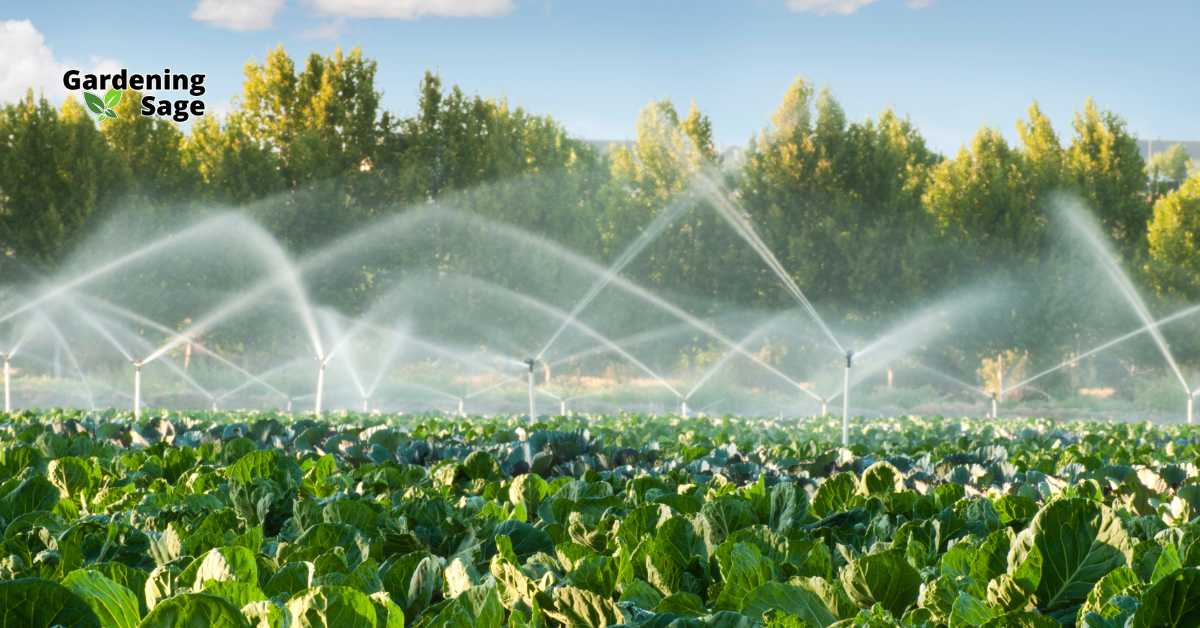In the quest for a thriving garden, water plays a pivotal role. However, the art of irrigation extends far beyond just quenching your plants’ thirst; it’s about doing so wisely and efficiently.
Understanding the science of garden irrigation is essential for any gardener aiming to promote robust plant growth while conserving water. This comprehensive guide will navigate you through the best practices and innovative techniques for efficient garden watering.
The Vital Role of Water in Gardening
Water is fundamental to plant health, facilitating nutrient absorption and playing a key role in photosynthesis. Yet, how we deliver this crucial resource can dramatically impact the well-being of our gardens.
Efficient irrigation involves more than just regular watering; it encompasses timing, methods, and understanding the unique needs of your plants and soil.

1. Tailoring Watering to Plant Needs
Different plants have varying water requirements based on factors like their species, growth stage, and the climate they’re adapted to.
Grouping plants with similar watering needs together can streamline your irrigation process and ensure each plant receives the right amount of water.
2. Importance of Soil Type in Irrigation
Soil type significantly influences water retention and drainage. Sandy soils, for instance, drain quickly and may require more frequent watering, while clay soils retain moisture longer.
Knowing your garden’s soil type is critical for determining the appropriate watering schedule and techniques.
3. Choosing the Right Irrigation Methods
Different irrigation methods suit different garden setups:
- Drip Irrigation: This system delivers water directly to the base of the plant, minimizing evaporation and runoff. It’s ideal for vegetable gardens and flower beds.
- Soaker Hoses: Emitting water along their length, soaker hoses provide even soil moisture, beneficial for densely planted areas.
- Sprinkler Systems: Best suited for large areas like lawns, they should be used wisely to reduce water loss due to evaporation.
4. Timing for Maximum Efficiency
The timing of your watering can significantly impact its effectiveness. Early morning watering is generally best as it allows water to seep into the soil before the heat of the day increases evaporation.
Evening watering should be avoided as it can lead to fungal diseases due to overnight moisture.
5. Understanding Deep Watering
Deep watering encourages deeper root growth, leading to stronger, more drought-resistant plants.
Instead of frequent, shallow watering, opt for less frequent watering that penetrates deeper into the soil, promoting healthier plant growth.
6. Utilizing Automated Irrigation Systems
For busy gardeners, automated irrigation systems, such as timers and smart controllers, can be a game-changer. They allow for consistent watering schedules and can be adjusted based on weather conditions, ensuring efficient water usage.
7. The Power of Rainwater Harvesting
Collecting rainwater for irrigation is an eco-friendly practice that reduces dependence on municipal water supplies.
It’s especially beneficial for plants, as rainwater is naturally soft and free of chemicals found in tap water.
8. Mulching for Moisture Conservation
A layer of mulch can do wonders for retaining soil moisture. Organic mulches like straw or wood chips also enrich the soil as they break down.
This not only reduces watering frequency but also enhances soil health.
9. Regular Soil Moisture Monitoring
Keeping tabs on soil moisture can prevent both over and under-watering.
Tools like soil moisture sensors or simple manual methods like the finger test can help you gauge if your plants are receiving the right amount of water.
10. Adapting to Weather and Seasonal Changes
Your watering strategy should adapt to the changing weather and seasons. In times of rain, you can cut back on watering, while in dry spells, increasing water frequency and quantity may be necessary.
Staying attuned to the weather helps you water more responsively and effectively.
11. Water Conservation Practices
Incorporate water conservation practices into your gardening. These include choosing drought-tolerant plants, installing water-efficient irrigation systems, and being mindful of water usage.
Every drop counts in making your garden both lush and environmentally sustainable.
12. Continuing Education in Garden Irrigation
Stay informed about the latest in irrigation technology and techniques.
Engaging with gardening communities, attending workshops, and keeping up with gardening literature can provide valuable insights into efficient watering practices.
Nurturing Your Garden with Smart Irrigation
Efficient garden irrigation is about nurturing your garden in a way that’s mindful of both plant needs and environmental impact. By employing these expert strategies, you can ensure that your garden not only survives but thrives, with every drop of water used to its fullest potential.
Embrace these smart irrigation practices, and watch as your garden becomes a testament to both your care and commitment to sustainability.














